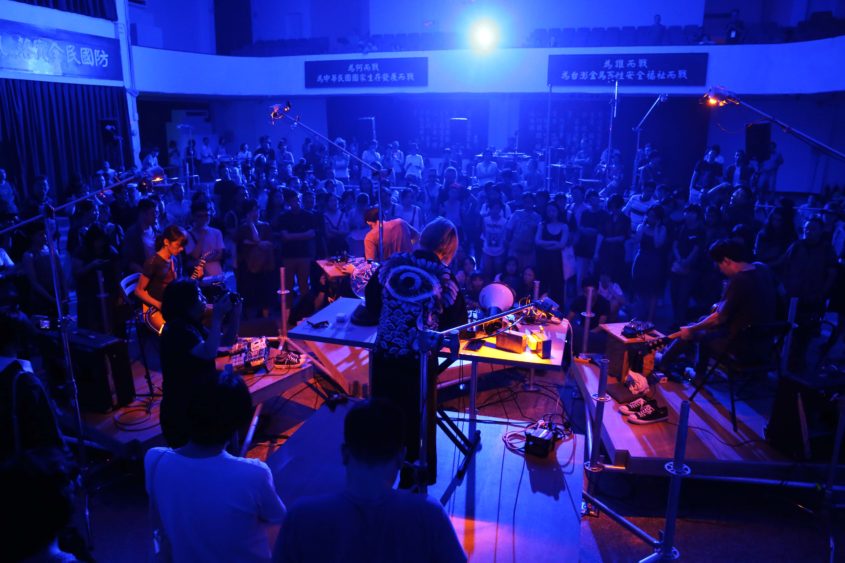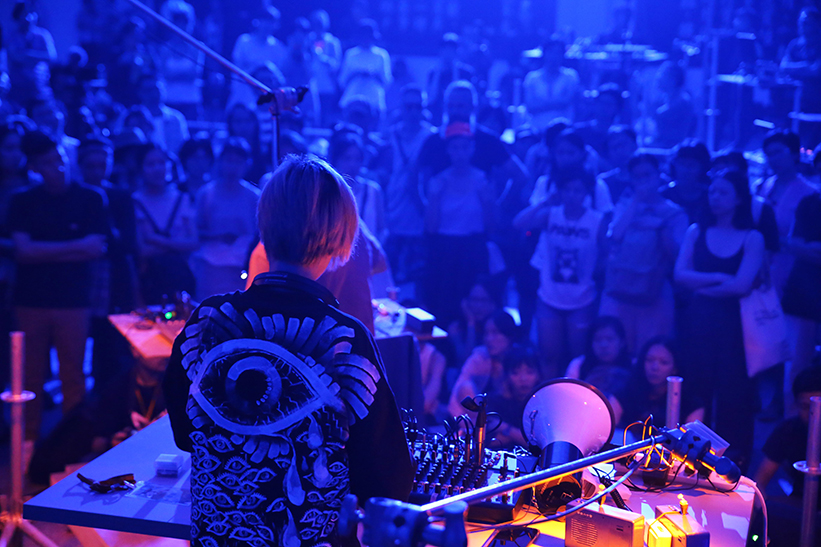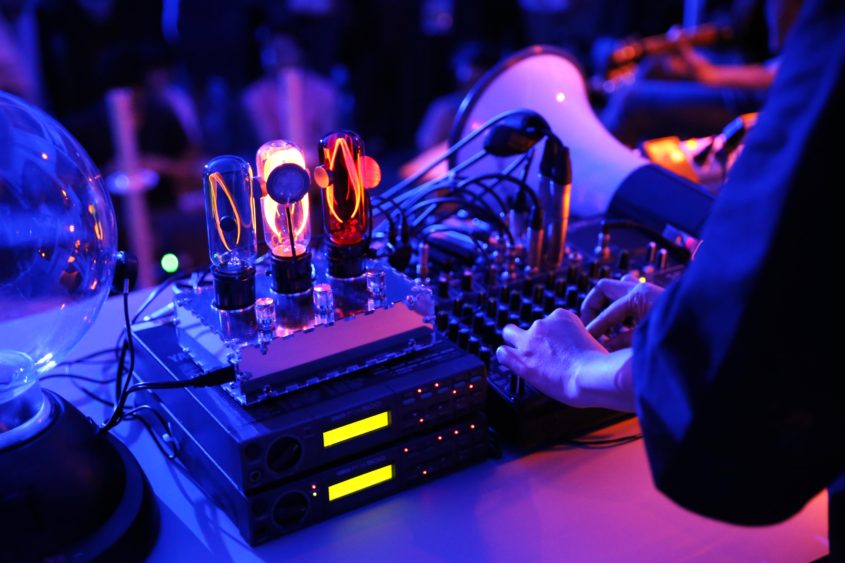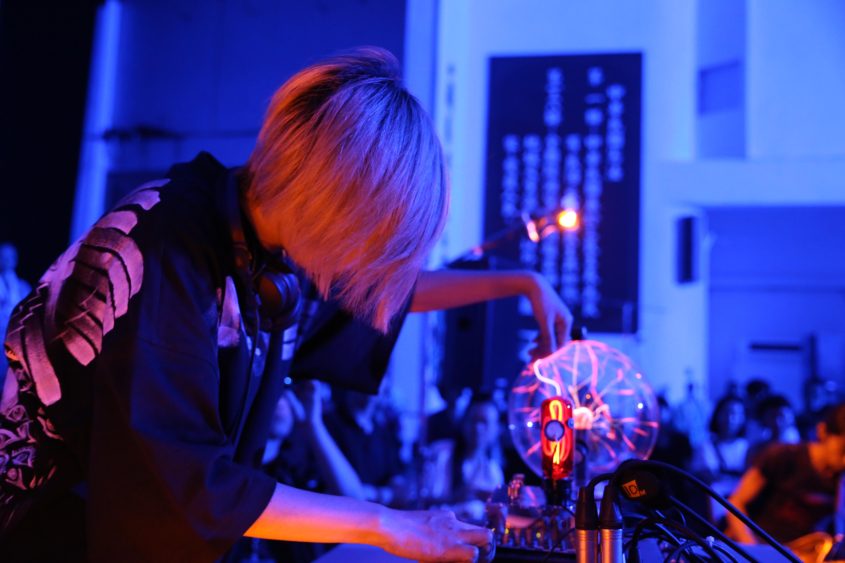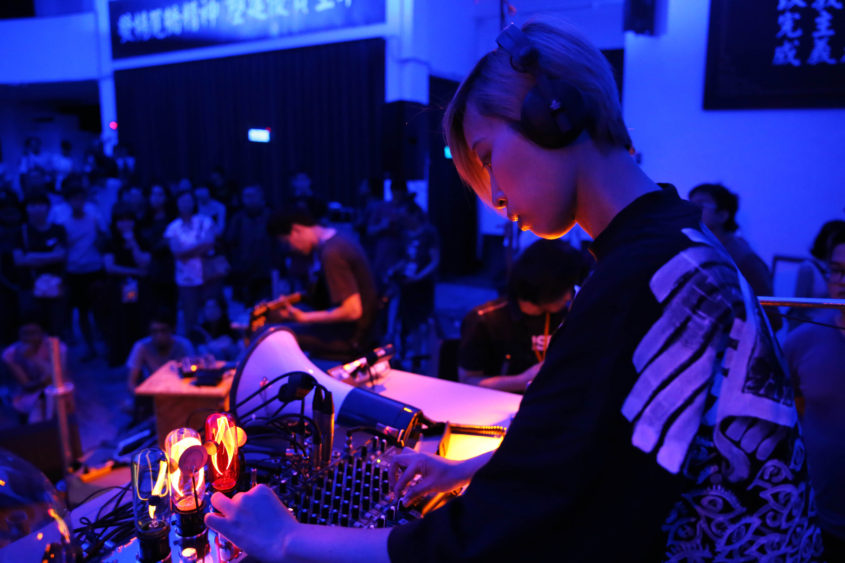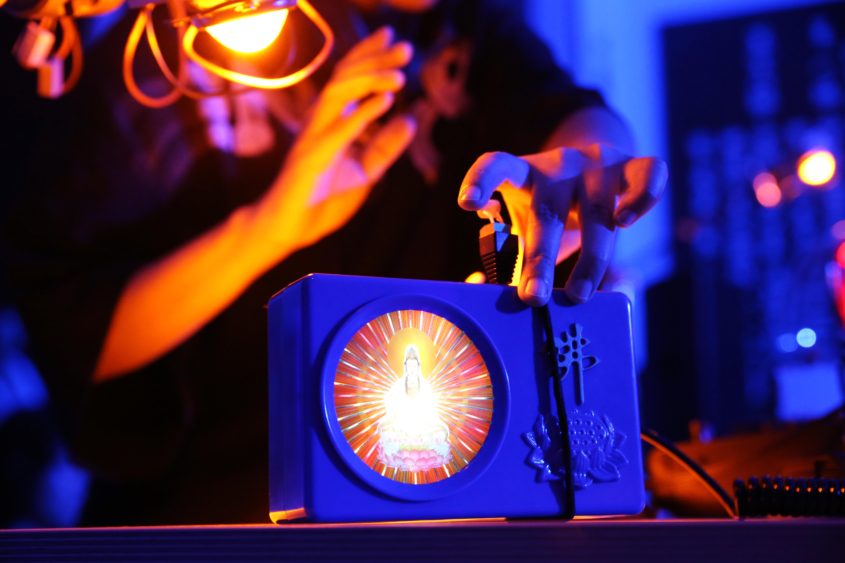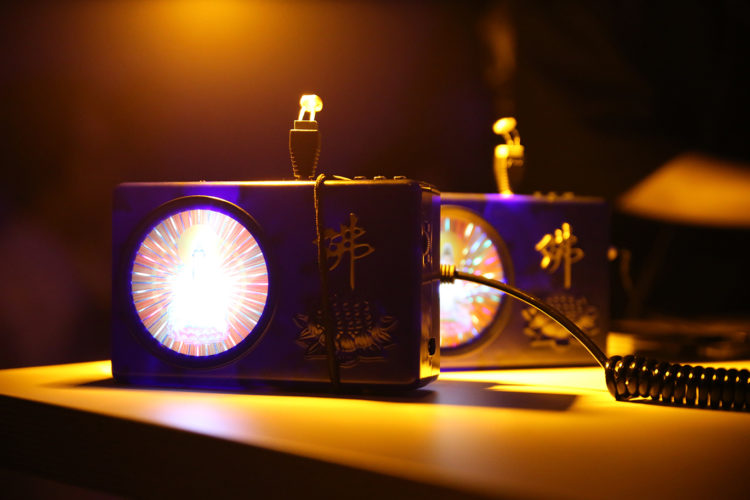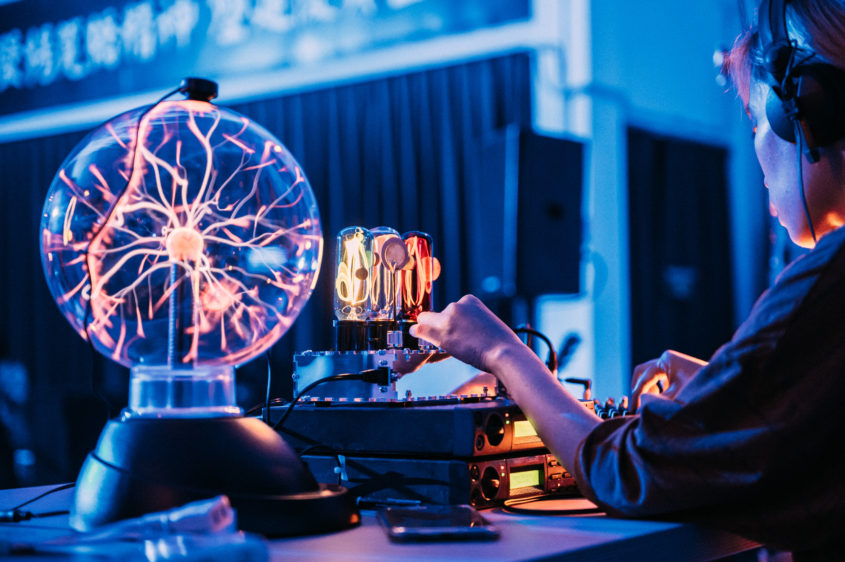前言
在「噪集2019-無主之島」表演中,是我從2011到2019年聲音創作的總累積成果,為了走這條藝術家路,不被家人諒解、不穩定的收入、作息顛倒的身體、不斷的嘗試,許多無法對外說出的困難,在這些年裡我都一一吞下了,對觀眾而言是聽了一場以分鐘計時的集體噪音表演,對我而言,卻是用歲月一年一刀緩慢刻畫出來的聲響。
The sound composition I presented at the event Noise Assembly 2019 — No One’s Island was the cumulative result of almost a decade of research and life experience from 2011 to 2019. In that time I faced many trials and difficult situations; family opposition, unstable income, irregular lifestyle, and a continuous struggle to launch my art career. I have swallowed all of this. For the audience the event was just a group noise show that lasted a brief moment, but for me it was part of a journey which has taken years to slowly carve out.
I「客製的孤島之聲」
我在「噪集2019-無主之島」的表演中有兩種聲源,一為駭客過的電弧離子球、自製樂器「光音」與一組二手效果器串連組合。另一為兩台駭客過的念佛機,與大聲公的組合。
圍繞著表演的主軸下,我認同主辦單位對此活動下的詮釋為:『個人可視為一座孤島,放送屬於自己的客製自由噪音,也可以與他人互為群島連結,進而混合同組的噪音呈現一種集體亂噪感。』因為這樣的表演方式,觀眾不知道此時此刻聆聽到的聲音,是來自於哪位藝術家或哪個樂器所發生,只能沈浸在現場所有的聲響效果中。讓表演者與聽眾共同身處在一種集體模糊聲音氛圍之中。
I“Customized Sound of an Island”
For my Noise Assembly performance I used two distinct sound sources in my composition, the first came from hacking a plasma globe and playing my handmade electronic instrument “sound light” which consists of three light bulbs connected to contact microphones. These sounds were run through second hand synthesizers to allow for greater manipulation. The second sound source came from hacking two buddhist chanting machines with a megaphone.
As expressed in the statement put out by the organizers of this festival, “each individual artist can be regarded as an island, playing their own free customized noise, they also can be connected with each other as a group of islands, mixing with other’s noise from the same group and playing a collective noise.” Following in this spirit, the audience couldn’t distinguish which sounds were being played by a single artist or any individual instrument, but rather became immersed in an integrated soundscape, the players and the audience were all together in a collective atmosphere.
II「轉變」
關於物品的「非正常功能」,在原來正常操作下,物品會發出正常的聲音,不過我想要的聲音是「正常功能」之外的範圍,這也是創作聲音好玩的地方,不是正規,是一種意外性。這些意外的聲音有了新任務/身份,滿足了聽眾對於新的聲音期待的想像。
II“Transform”
When it comes to using repurposed electronic devices I want to push these objects beyond the sounds that they make when used in their intended fashion or “normal” function. The unexpected outcomes resulting from their intentional misuse is often the fun part of sound making. These sounds have a new mission and identity independent from the intentions of the manufacturer. They satisfy the audience’s desire for new sounds and expand their aural horizons.
電弧離子球原先是增添氣氛裝飾或商用剪綵。2015年,我在士林科教館的手工電子噪音工作坊教學中,發現電弧可以經電磁波麥克風收音為電磁波聲音,除了可以當成教學教材讓學員採樣聆聽,也可以應用在噪音表演中。電弧離子球高頻的聲響,有時會讓聽眾有時候誤以為是機器錯誤的警示音,也打破我們日常以為電磁波應有的聲音樣子。自製樂器「光音」裡的燈絲搖晃震動,經蜂鳴片與電磁波麥克風收音為尖細高頻,與二手效果器混音後做為表演一部份的聲音呈現。
Plasma globes are typically used as educational tools, or for atmosphere enhancement, decoration, sometimes to dazzle customers at a business opening. In 2015, I demonstrated how to use a pickup mic to record electromagnetic soundwaves from a plasma globe in my handmade electronic workshops at the The National Taiwan Science Education Center. During those workshops, I started to think that the plasma globe could also be used in a sound performance. To an audience the high pitch frequency sounds of my plasma globe can seem like a warning or error tone of the machines. Used in this way the plasma globe can break people’s perspectives or expectations of what the object can be. I also create sound by using my handmade electronic instrument “sound light”, this uses electromagnetic pickup microphones to record the sounds produced by wavering filaments as they hit their bulb’s inner side.
III「破壞」
念佛機內建的曲目經由手勢被破壞轉換成另一種新的曲目,讓人離開了熟悉感,同時也變成新的聲音效果。回顧念佛機的創作是在2018年九月,我受失聲祭和倫敦的Music Hackspace邀請在英國薩默塞特府駐村,是駐村計畫裡的藝術家工作坊內容發展的延伸。多年擔任王福瑞老師助手,我學到了如何修改念佛機裡面的電子零件,讓念佛機可以以手勢控制光敏電阻變化音調,播出慢速與快轉的迴圈曲目。歌曲經由手勢轉變成噪音,失去了原有歌曲中語言意義,變成有聽到什麼也沒聽到什麼的聲音效果。
III“Destroy”
The preprogrammed songs of the Buddhist chanting machines are warped and destroyed by hand gesture to create a new kind of song. This new sound made people depart from familiarity and enter into a new soundscape. In September 2018, I was invited by Lacking Sound Festival and Music Hackspace to do an artist-in-residence at Somerset House, London. I developed my technique of using Buddhist chanting machines to create sound compositions in the residence workshops I conducted. I was first shown how to hack these machines by the artist Fujui Wang while working as his assistant. Using a photoresistor one can change the pitch of a machine, adjusting the speed of the chants it plays. Songs are stretched to the point where their original meaning collapses and the language becomes unintelligible in a conventional sense. The sound takes on an ethereal quality that is neither here nor there.
Photo credit to Vivy Hsieh
Translation:Mark Hanson
Special Thanks to Fujui Wang
————
Link of Noise Assembly 2019 — No One’s Island
